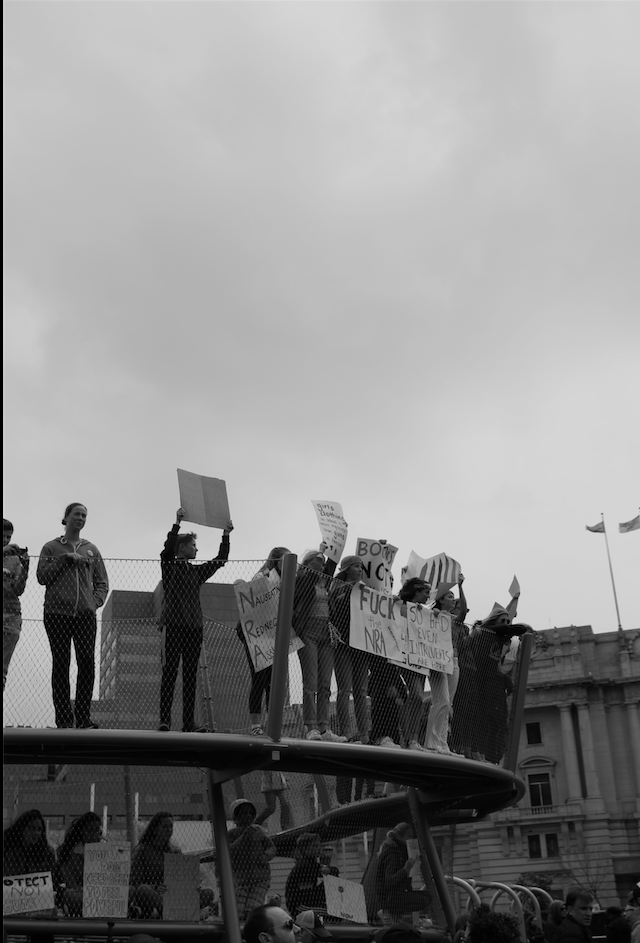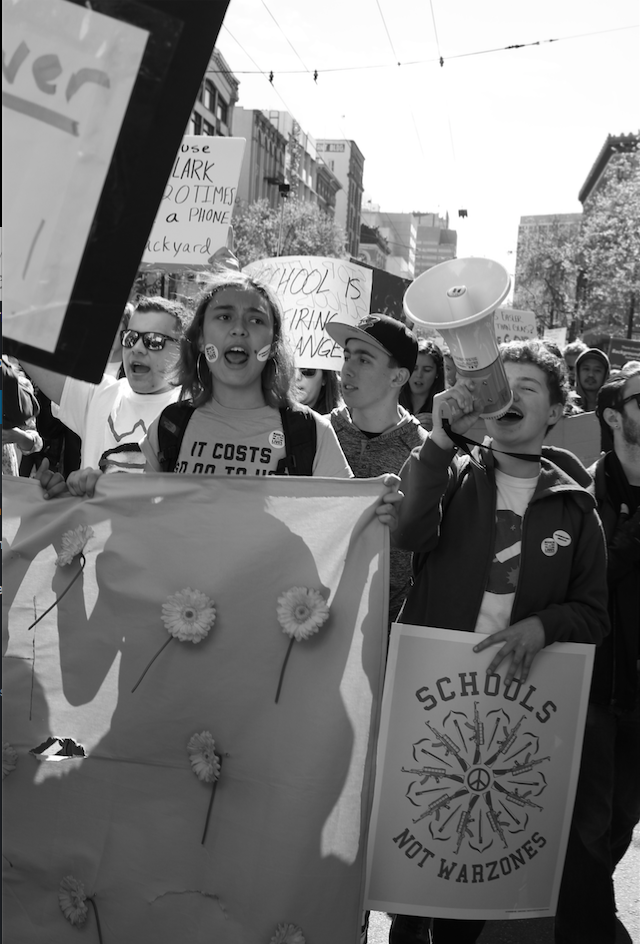Almost immediately after the February 14, 2018 shooting at Marjory Stoneman Douglas High School, students in Parkland, Florida and across the country began protesting to demand stricter gun control laws, both on a state and federal level.
Only one day after the shooting, survivor and Stoneman Douglas senior David Hogg told CNN, “We are children; you guys are the adults, You need to take some action and play a role. Work together. Come over your politics and get something done.” However, the majority of action in the month following the protest came from students, most of whom cannot even vote.

On February 17, hundreds of students from Marjory Stoneman Douglas High School rallied in Fort Lauderdale, Florida outside the Broward County federal courthouse to demand new firearm legislation. Students held posters expressing their grief and anger, as well as publicly called out lawmakers on their lack of action. In their speeches, the students used first hand experiences to emphasize why it should be harder to purchase firearms, particularly assault rifles. Though primarily students spoke, many teachers and other adults also attended the rally. Additionally, Florida Senator Gary Farmer (D) stoke at the rally to publicly express his support of the student activists, as well as call out other Florida state politicians for their lack of change to gun control legislation within the state.
At the rally, Stoneman Douglas senior Emma Gonzalez spoke, saying “Every single person up here today — all these people should be at home grieving — but instead we are up here standing together, because if all our government and president can do is send thoughts and prayers, then it is time for victims to be the change we need to see.”
Stoneman Douglas students also took their protests further away, to Florida’s capitol. On February 21, one week after the shooting, roughly 100 Stoneman Douglas students boarded busses in Parkland, for a seven hour, 400 mile trip to Tallahassee. The students went to the state capitol building and broke into small groups to meet with roughly 70 elected Florida officials, including Florida Governor Rick Scott (R) and various senators. Their broader goals for both the discussions and future marches and discussions included raising the minimum age to purchase assault rifles from 18 to 21 in Florida, increasing mental health screenings, and creating better safety measures in schools. Students also questioned the legislators on their stances on gun reform and on the February 20 procedural Florida House vote that prevented an assault weapon ban bill from moving forward. Additionally, the students were joined by nearly 3,000 other protesters advocating for gun reform and marching in solidarity outside the capitol building.
Since then, the protests have expanded to include high schools across the country. Following the shooting, a few students from Stoneman Douglas, created the #NeverAgain movement, with the intent to create a nonpartisan movement with the goal of preventing another school shooting. The hashtag spread nationwide drawing attention to the movement, and helping encourage students to speak up, as well as participate in a variety of movements.

Additionally, along with the organizers of the 2017 Women’s March, a group of high school students from around the country organized the “Enough!” National School Walkout for March 14, the one month anniversary of the shooting. They encouraged students and teachers to walk out of their schools for 17 minutes, for the 17 victims, at 10 a.m. local time both to honor the victims and help draw awareness to the need for gun control. They did not create a set plan for the 17 minutes in the hopes that students would the space as they saw fit for their school, and many chose to stand in a circle holding hands to build community, held seventeen members of silence, or read out the names of the victims. Additionally, the walkout set demands, including requiring background checks on gun sales in all states and banning assault weapons and high capacity magazines nationwide. Ultimately, over a thousand schools nationwide participated, including Lick-Wilmerding students and faculty who walked to Balboa Park to stand in a circle holding hands and sharing a minute of silence. Rather than returning to class, 18 students then went on to join hundreds of other San Francisco students at City Hall for speeches and a march down Market street to advocate for change.
Annette Vergara-Tucker ’19, who attended the walkout at City Hall, remarked that “It was almost entirely students and had a very communal energy. The chants would go on for a long time, everyone was involved, talking, coordinating, and networking. It’s been interesting to see just how much more energy you can bring to the table when you know you’re working with a group of people who’ve all had similar experiences. I think there was a lot of intetion behind our messaging for this march, and we tried to make it clear that we weren’t there as Lick-Wilmerding students, or as private school students, but as high school students who could be impacted by gun violence. We were there to lend our voices, our support, and our resources to the movement.”
Students from Stoneman Douglas, including Gonzalez and junior Cameron Kasky planned another march for Saturday, March 24 called March for Our Lives, with a main rally in Washington, D.C. and an additional 824 organized events worldwide. An estimated 800,000 people attended the march in Washington, D.C. alone. Additionally, the march in Washington included 20 student speakers who addressed the need for change.
Naomi Wadler, an eleven year old who organized a walkout at her elementary school in Alexandria, Virginia, spoke, emphasizing the need for the movement to include to represent more voices. “I’m here today to represent the African-American girls [killed by gun violence] who don’t always make the front pages of the newspapers. My friends and I might still be 11, we might still be in elementary school, but we know. We know life isn’t equal for everyone and we know what is right and wrong. We also know that we stand in the shadow of the Capitol and we know that we have seven short years until we, too, have the right to vote.”
Additionally, a coalition of Lick-Wilmerding students, faculty, and families marched together at March for Our Lives in San Francisco.Vergara-Tucker remarks that “Having the adults and parents there made it feel a little less autonomous [than the March 14 walkout], but there was still a lot of talk about how can we make this a more inclusive march and a more inclusive movement. Obviously the organizing power of the nation isn’t only students. The legs of this movement can’t only be thos of kids because we need voting power and fundraising that adults can provide.”
Moving forward, survivors of the Stoneman Douglas shooting along with students from schools across the country, including Lick, will undoubtedly continue to work to combat gun violence across the country. As Kasky said at March for Our Lives in Washington, D.C., “We hereby promise to fix the broken system we’ve been forced into and create a better world for the generations to come. Don’t worry, we’ve got this.”






